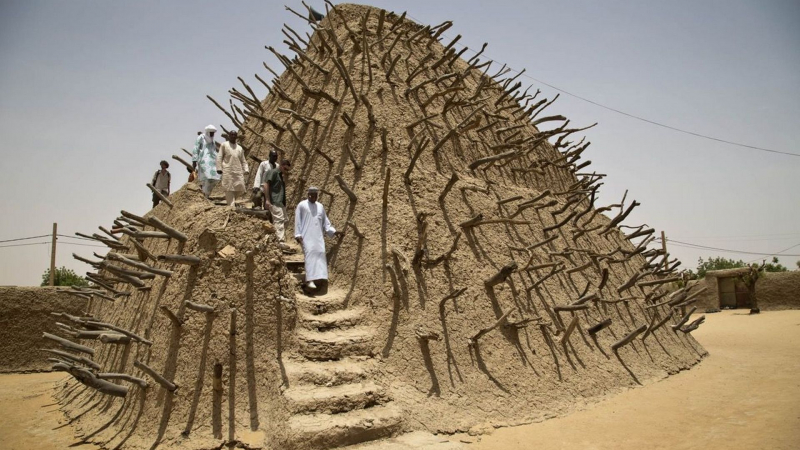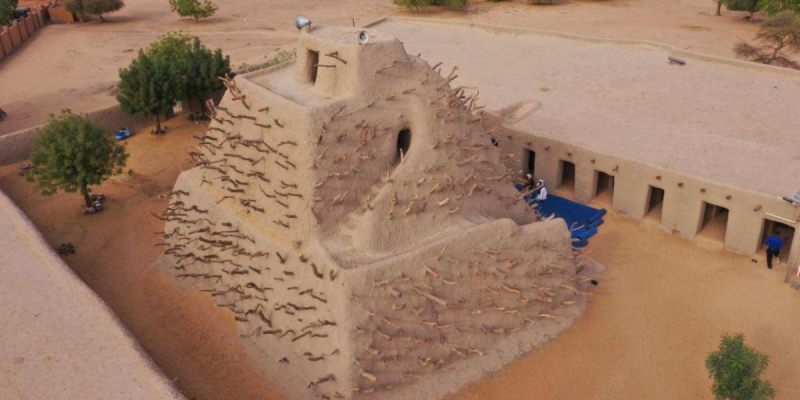Tomb of Askia, Gao
Askia Mohammad I, one of the Songhai Empire's most prolific monarchs, is thought to be buried in the Tomb of Askia in Gao, Mali. It is a UNESCO World Heritage Site that was built around the end of the fifteenth century.
The tomb is described by UNESCO as a good example of the West African Sahel's massive mud-building traditions. A pyramidal mausoleum, two mosques, a cemetery, and an assembly area are all part of the complex. It is Gao's largest pre-colonial architectural monument, standing 17 meters tall. It is a prominent example of the Islamic architectural style, which expanded over the region afterwards.
The enlargement of the mosque buildings in the 1960s and mid-1970s, as well as the installation of a wall around the site in 1999, are recent changes to the site. Throughout its history, it has also been re plastered on a regular basis, which is an important part of the maintenance and repair of mud constructions. In the early 2000s, electricity was added, allowing ceiling fans, lights, and a loudspeaker to be mounted on top.
The city of Gao uses Askia as a mosque and a publicly owned cultural facility on a regular basis. Both national and municipal regulations safeguard the site and a buffer zone around it.
Location: Gao, Mali







